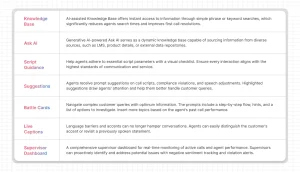Leveraging Augmented Reality for Immersive Trade Show Experiences

Trade shows are loud, crowded, and—let’s be honest—often forgettable. But what if you could cut through the noise? Augmented reality (AR) isn’t just for gaming anymore. It’s transforming trade shows from static booths into dynamic, interactive experiences that stick in attendees’ minds long after they’ve left the convention center.
Why AR? The Trade Show Pain Points
Here’s the deal: traditional trade shows struggle with engagement. Attendees shuffle past rows of nearly identical booths, collecting brochures they’ll toss later. AR changes that by:
- Breaking the physical barrier: No need for bulky displays—AR overlays digital content onto the real world.
- Creating shareable moments: People love snapping AR selfies or videos (free marketing, anyone?).
- Saving costs: Less shipping, fewer printed materials, and reusable digital assets.
How AR Works in a Trade Show Setting
Imagine this: a visitor points their phone at your booth, and suddenly, a 3D model of your product assembles itself mid-air. Or they scan a QR code, and your CEO “appears” to give a personalized demo. Here’s how it’s done:
1. Marker-Based AR
Triggers digital content when a camera scans a specific image (like a logo or poster). Simple, effective, and doesn’t require fancy hardware.
2. Location-Based AR
Uses GPS or beacons to activate experiences when users enter certain areas—great for guiding attendees to your booth.
3. Projection AR
Projects interactive images onto surfaces. Think of a “virtual catalog” where products respond to touch gestures.
Real-World Examples That Crushed It
Still skeptical? These brands nailed it:
| Company | AR Use Case | Result |
| IKEA | Virtual furniture placement in booths | 35% longer dwell time |
| Pepsi | Interactive AR games at their stand | 200% more social shares |
| Volvo | AR test drives via headsets | 22% increase in leads |
Getting Started: Practical Tips
You don’t need a Hollywood budget. Start small with these steps:
- Define your goal: Brand awareness? Lead gen? Product demos?
- Choose the right tech: WebAR (no app needed) or a custom app?
- Design for simplicity: If it takes more than 10 seconds to figure out, you’ve lost them.
- Train your team: Staff should be able to troubleshoot basic AR hiccups.
The Future: Where AR is Headed
AR glasses are coming—slowly but surely. Imagine attendees walking through a trade show seeing personalized pop-ups above every booth. Or virtual networking avatars. The line between physical and digital will blur even further.
For now, though, the low-hanging fruit is ripe. AR turns passive observers into active participants. And in a sea of sameness, that’s priceless.








